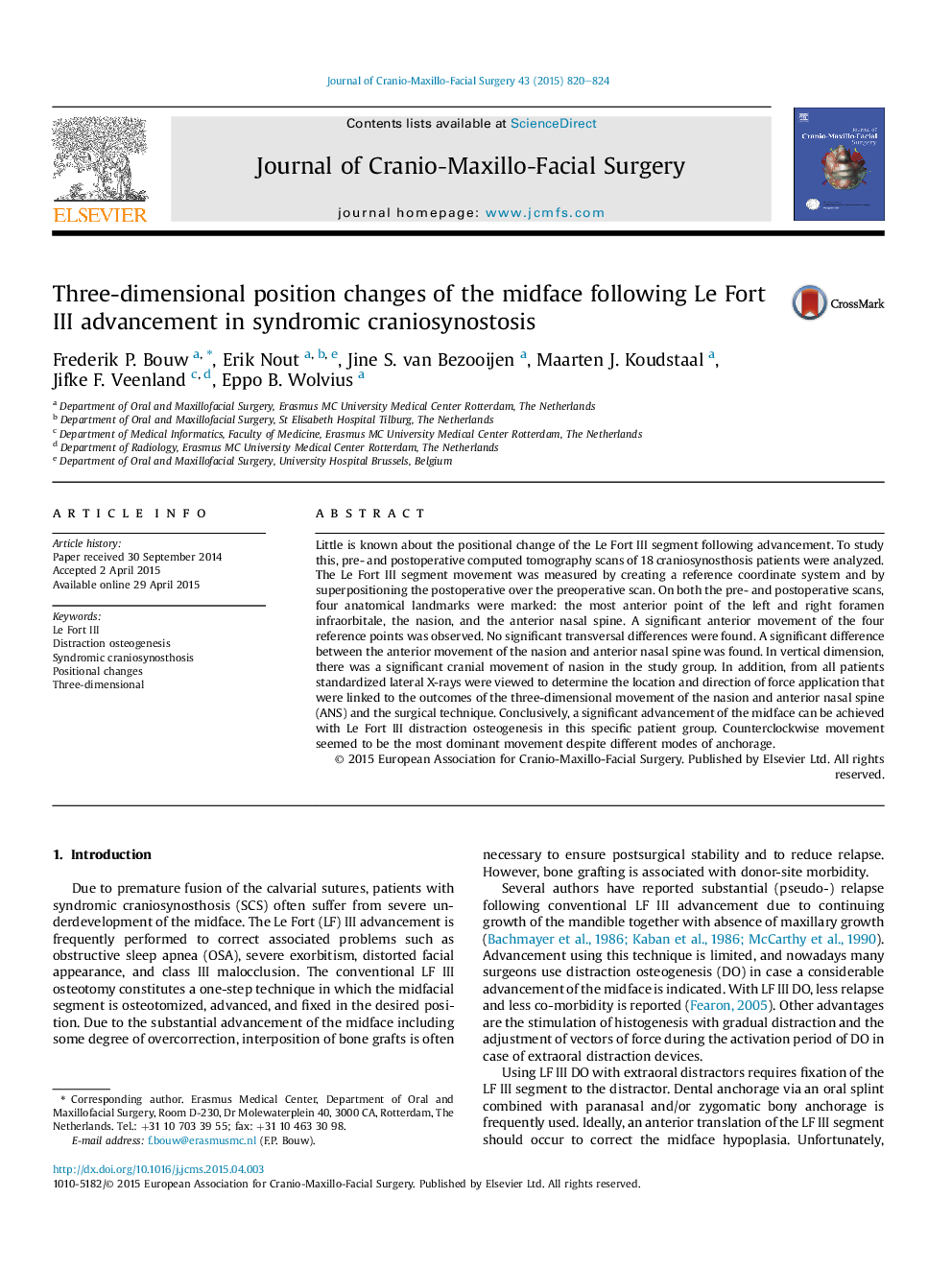| Article ID | Journal | Published Year | Pages | File Type |
|---|---|---|---|---|
| 3142301 | Journal of Cranio-Maxillofacial Surgery | 2015 | 5 Pages |
Little is known about the positional change of the Le Fort III segment following advancement. To study this, pre- and postoperative computed tomography scans of 18 craniosynosthosis patients were analyzed. The Le Fort III segment movement was measured by creating a reference coordinate system and by superpositioning the postoperative over the preoperative scan. On both the pre- and postoperative scans, four anatomical landmarks were marked: the most anterior point of the left and right foramen infraorbitale, the nasion, and the anterior nasal spine. A significant anterior movement of the four reference points was observed. No significant transversal differences were found. A significant difference between the anterior movement of the nasion and anterior nasal spine was found. In vertical dimension, there was a significant cranial movement of nasion in the study group. In addition, from all patients standardized lateral X-rays were viewed to determine the location and direction of force application that were linked to the outcomes of the three-dimensional movement of the nasion and anterior nasal spine (ANS) and the surgical technique. Conclusively, a significant advancement of the midface can be achieved with Le Fort III distraction osteogenesis in this specific patient group. Counterclockwise movement seemed to be the most dominant movement despite different modes of anchorage.
